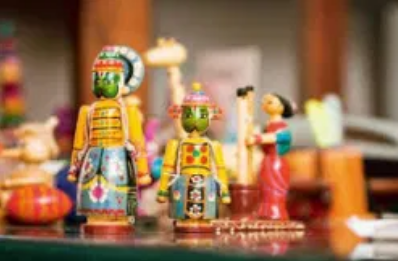
Constructed garments, Apparel, Domestic Arts/Crafts, Embroidery, Endangered/ Red List
Kasav/ Kasab Work/ Metallic Thread Embroidery of India
Kasav embroidery is a form of zardozi embroidery in which gold or silver fibres are used to produce patterns for embroidery. Silk, cotton, brocade, and velvet are among the most common fabrics for this work, though lighter fabrics such as chiffon may also be used. As it is a variation of Zardozi, this too was introduced by the Mughal rule. Like many other types of embroideries, Kasav was popular among the royal families but found its way to the common households as well.
This type of embroidery, which originated in Persia, is heavily influenced by Persian aesthetics. As a result, most embroidery work includes designs and motifs influenced by nature, such as flowers, leaves, vines, trees, as well as peacocks and smaller birds.
Kasav embroidery is often confused with Mukaish or Badla work, which also uses metallic thread. The difference between the two forms is that in Mukaish work a plain metallic wire is used whereas in Kasav the wire is wrapped around the thread.
Traditionally Kasav work used to be performed by hand using precious metals like Gold and Silver, however, today the work is largely done through machines with variations using plastic wires. This has made the craft more accessible to the general population. The embroidery can be easily found in lehenga cholis, indian suits and saris.
Gallery
YOUR VIEWS
PRACTITIONERS: INDIA
Access 70,000+ practitioners in 2500+ crafts across India.
BIBLIOGRAPHY
10,000+ listings on arts, crafts, design, heritage, culture etc.
GLOSSARY
Rich and often unfamiliar vocabulary of crafts and textiles.
SHOP at India InCH
Needs to be written.





